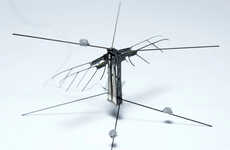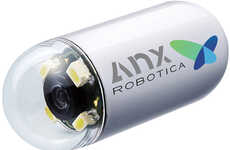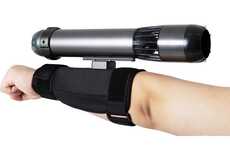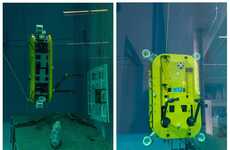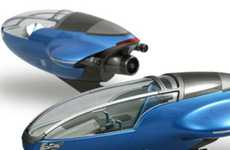
Blood Vessel Swimming 'Proteus' Robots Could Soon Be Reality
TechnoGadget — January 21, 2009 — Tech
References: dailymail
Do you believe it? A microscopic submarine like in the movie Fantastic Voyage is now set to become a reality.
Scientists in Australia have designed one of the smallest motors which they say can swim through blood vessels, and can drive around inside the body. The device is said to measure a quarter of a millimeter wide.
The scientists also believe it can be used to treat stroke patients, just like the sub in the 1966 film which starred Raquel Welch.
The device is equipped with a camera to easily send important pictures to the surgeon. It can also remove body tissue for biopsies or deliver treatments to body parts needing to be cured.
Scientists who designed the motor, which is less than the width of two hairs, named it Proteus after the miniaturized submarine in the Oscar-winning film.
So far, the motor has successfully swum through human blood in a laboratory, although scientists at Monash University in Melbourne still hope it will also power its way up to the brain’s narrow arteries.
Strong enough to swim through the blood stream, the micro sub also controls piezoelectricity – the same type of energy used in gas lighters.
It does not have a propeller. Instead, it has a tail less than a millimeter long which swishes thousands of times a second to make it move.
Scientists in Australia have designed one of the smallest motors which they say can swim through blood vessels, and can drive around inside the body. The device is said to measure a quarter of a millimeter wide.
The scientists also believe it can be used to treat stroke patients, just like the sub in the 1966 film which starred Raquel Welch.
The device is equipped with a camera to easily send important pictures to the surgeon. It can also remove body tissue for biopsies or deliver treatments to body parts needing to be cured.
Scientists who designed the motor, which is less than the width of two hairs, named it Proteus after the miniaturized submarine in the Oscar-winning film.
So far, the motor has successfully swum through human blood in a laboratory, although scientists at Monash University in Melbourne still hope it will also power its way up to the brain’s narrow arteries.
Strong enough to swim through the blood stream, the micro sub also controls piezoelectricity – the same type of energy used in gas lighters.
It does not have a propeller. Instead, it has a tail less than a millimeter long which swishes thousands of times a second to make it move.
Trend Themes
1. Microscopic Body Submarines - Opportunity for disruptive innovation in medical treatment and precision medicine through the use of micro-submarines in blood vessels.
2. Blood Vessel Swimming 'proteus' Robots - Potential for disruptive innovation in invasive surgeries and diagnostic procedures as tiny robots can navigate blood vessels, take pictures, and perform biopsies.
3. Piezoelectricity in Medical Devices - Disruptive innovation opportunity in medical devices by utilizing piezoelectricity as an energy source for micro-robots and other innovative medical technologies.
Industry Implications
1. Healthcare - Micro-submarines and swimming robots open up new possibilities for innovative medical treatments and procedures.
2. Medical Devices - Development of micro-robots and miniaturized devices for imaging, biopsy, and drug delivery creates opportunities for disruptive innovation in the medical devices industry.
3. Biotechnology - Integration of micro-submarines and advanced robotics technology in biotechnology research can lead to disruptive breakthroughs in precision medicine and drug delivery systems.
1.7
Score
Popularity
Activity
Freshness



